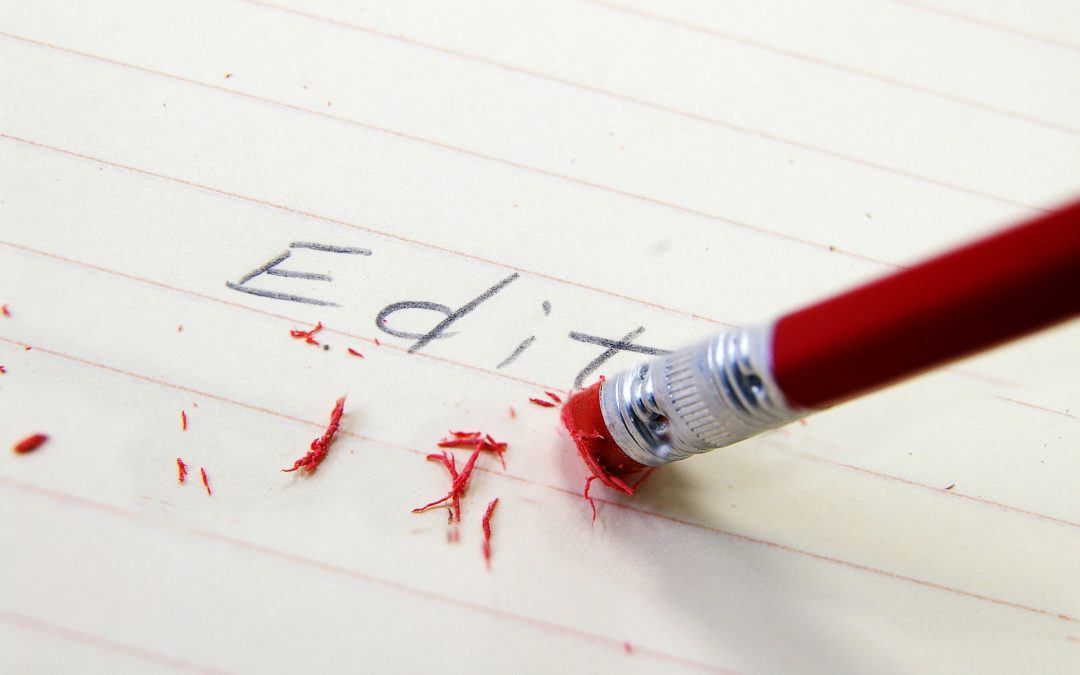As writers, we all know that a first draft of a piece is far from the final product. It often takes multiple drafts before you reach a point of satisfaction. Even if you’re a big planner, like me, you will go through at least five drafts before you are remotely happy with the result. This is especially true of longer fiction pieces, since it is impossible to catch everything in a novel that spans over hundreds of pages. But no matter how many drafts it takes before you’re officially done, we all must go through the two major editing processes.
The first edits you make to a draft are more often than not big picture edits. When I say big picture I mean you will change the major content of your piece. This includes but is not limited to:
- Plot–What sections are absolutely necessary to the story? What doesn’t add anything to the overarching story?
- Point of view–Is the point of view you currently have working? Have you tried writing from a different perspective?
- Pacing–What sections need to be sped up or slowed down?
- Scenes–Are there any unnecessary scenes? Do some scenes need to be lengthened or shortened?
- Characters–Do the characters experience any development throughout the piece? Are some characters even necessary to the plot?
- Structure–Should this chapter really be here? Maybe a particular section needs to come earlier in the story.
When you have finished with these edits, you might realize your piece has changed dramatically from the first draft. Don’t worry, it is completely normal for it to seem like you have a totally new story. For example, I recently looked at a potential first chapter of a story and realized the only part of it I liked spanned a total of two pages. But those two pages are now the foundation of a completely new and better story. While you have made many major changes to the piece, you will find that the important stuff remains.
Once you have completed the big picture edits, you will move on to line edits. These are the edits you make to the individual lines of a story. You remember all those spelling and grammar rules you learned in middle school? It’s time to put them to use. Making these edits will cut back on unnecessary words and sentences, helping the piece flow more smoothly. Like Dr. Seuss said, “So the writer who breeds more words than he needs, is making a chore for the reader who reads.”
- Spelling and grammar–Have you spelled every word correctly? Is your grammar consistent?
- Sentences–Can you combine any sentences? Would a paragraph make more sense without a certain sentence?
- Words–Are you using too many words? Are you using a certain word correctly?
Although it may seem tedious, both types of editing are crucial for drafting a piece you are happy with. They may take time and energy, and your final product may be entirely different than the piece you started with, but these edits will likely save you embarrassment in the future. Because even if no piece is perfect, these edits make the difference between a good and a great piece.
Meet the blogger:
 MEGHAN O’BRIEN (Assistant Editor, Fiction) recently graduated from Hamline University with a BA in English and a BFA in creative writing. She enjoys writing fiction and binge watching various shows on Netflix. She one day hopes to become a published author or at the very least be employed.
MEGHAN O’BRIEN (Assistant Editor, Fiction) recently graduated from Hamline University with a BA in English and a BFA in creative writing. She enjoys writing fiction and binge watching various shows on Netflix. She one day hopes to become a published author or at the very least be employed.


